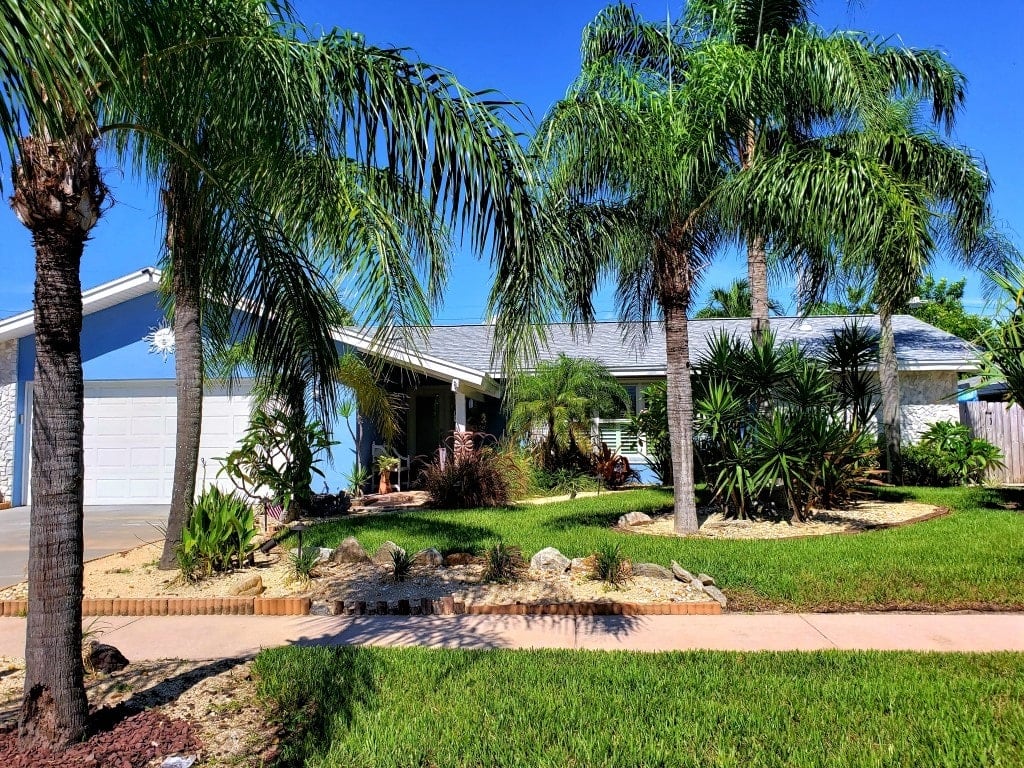

The Everglades is composed of limestone bedrock cov. This area of slowly moving water is known as the Everglades, although the term is also often used as a catchall to refer to the region's natural systems. It passed to the west of the Atlantic coastal “ridge” (less than 10 meters in elevation) in a north–south direction through Palm Beach, Broward, and Dade Counties. The lake regularly overflowed its southern banks, resulting in a slow “sheetflow” of water roughly 50 kilometers wide. It slopes very gently south from Lake Okeechobee-that is, only 3–6 centimeters per kilometer over the 145 kilometers to Florida Bay at the tip of the peninsula. The terrain of the South Florida hydrologic system is barely more than a few meters above sea level and has virtually no perceptible local relief. Ued south through interminable reaches of saw grass and deepwater sloughs, freshening the high-saline waters of Florida Bay upon discharge to the tidewater. In addition, plant diseases and weed control are far more serious in the summer than in the winter (Snyder and Davidson, 1994).įIGURE 10-2 Historic Everglades watershed. Although crops could be grown throughout the year, the summer heat and humidity are very stressful to most agricultural plants and reduce yields. Most years the area has no freezing temperatures and enjoys a growing season of more than 320 days. The South Florida region has an extended growing season. The study area is subject to frequent episodic events-tropical and winter storms (including hurricanes), droughts, flooding, and hard freezes (Duever et al., 1994). During the dry season from November to April, the average rainfall is less than 60 millimeters a month during the rainy season from June to September, the rainfall averages over 200 millimeters a month. Rainfall averages 1,400 millimeters a year. The region has a mild winter climate, with January temperatures ranging from 11° to 23☌ (mean 18☌), and a warm summer climate, with August temperatures ranging from 22° to 33☌ (mean 28☌). The South Florida study area is located on a low-relief limestone peninsula that lies largely at the southern extremity of North America in the humid subtropical climatic zone. Second, we illustrate how each time period set the stage for the next phase of development by presenting certain constraints and possibilities.
Florida beach landscape drivers#
First, we look closely at the nature of the human–environment interactions within each period and the social and physical drivers effecting transformations in them (see Merchant, 1990-the general discussion of ecological transformations-and Solecki et al., 2000).

The interactions among these elements are examined in several ways. Each period is characterized by a different set of human–environment interactions, along with differing relationships among population growth, consumption, and land use change.

The shifts in land use occurred in stages, beginning in the late nineteenth century. This land represents about 41 percent of the total study area, which covers some 27,000 square kilometers. Since 1900, 11,027 square kilometers of natural land in the study region have been shifted to agricultural and urban uses in connection with federal, state, and private efforts to provide drainage and flood control. Human interventions in South Florida's natural systems have been dramatic, with notable effects on the quality of life. The actual study area comprises the seven southernmost counties in Florida: Broward, Collier, Dade, Hendry, Lee, Monroe, and Palm Beach (see This chapter describes the relationship between expansion of the human system and changes in land use in the South Florida region of the United States. 10 Transformation of the South Florida Landscape


 0 kommentar(er)
0 kommentar(er)
